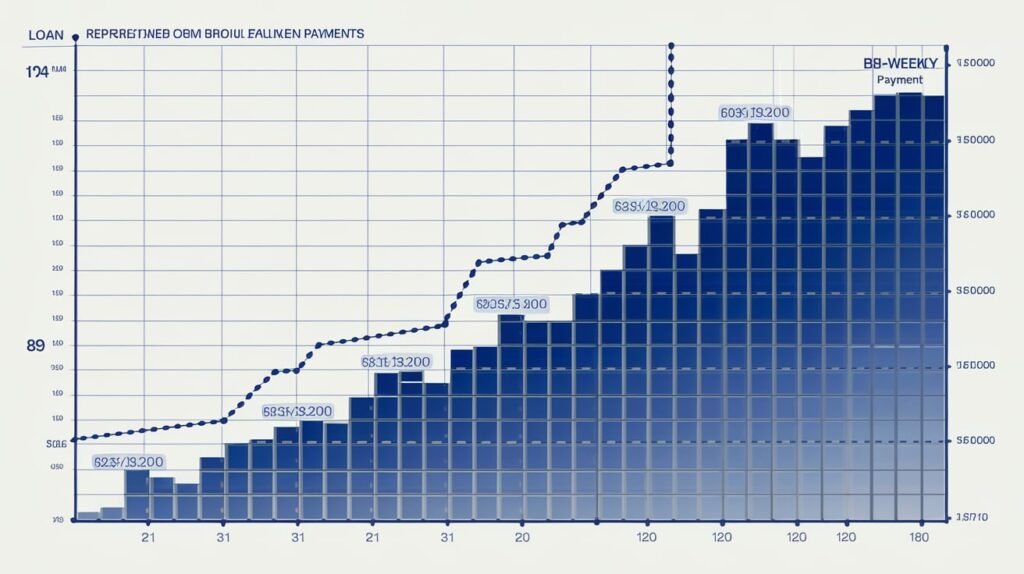How to Choose the Best Loan for Your Financial Needs
Introduction
Loans are an element of personal finance that often helps to achieve goals one may be interested in-the purchase of a home or funding through education, funding unexpected costs, and also other long-term goals and short-term goals. Such a big number of possibilities makes the choice of the very loan pretty difficult. The optimal loan depends on your exact financial status, loan specifics, and interest rates versus repayment conditions. It explains different types of loans and gives considerations in guiding one into making the best choice between them.
1. Understanding Different Types of Loans
Before you choose a loan, it’s essential to understand the main types available, as each has unique features and suits different purposes.

1.1 Personal Loans
Personal loans can be used for various purposes, such as medical bills, renovating a house, paying other debts, etc. The loans are mainly unsecured loans; meaning that no collateral is provided; however, your credit score will greatly influence the rate of interest you are subjected to. Fixed and variable rate interest options are usually allowed for such loans, along with repayment periods between one to five years.
1.2 Home Loans (Mortgages)
Mortgages, or home loans, are the loans for purchasing a property. This particular loan can provide a much lower interest rate compared with any other kind of loan to the borrower because he/she can utilize the property to secure the loan. However, they remain for a long time; most of them remain for between 15 and 30 years. In this type of loan, fixed or floating rates of interest may be there. One interest is a fixed rate, while the adjustable-rate mortgage has an extremely low interest initially that later gets adjusted upward.
1.3 Auto Loans
Auto loans are granted to acquire an automobile or any other automobile. The loans are always secured with the vehicle in that the car will be taken if one is unable to pay back. The interest rate for most auto loans is a bit lower than that of a personal loan especially on a new automobile. They are as compared to home loans since they have a repayment period of between three to seven years.
1.4 Student Loans
Student Loan for Study purpose: There are student loans given, which cover expenditures toward education; these usually have comparatively low interest rates and relatively flexible repayment plans. For example, Federal student loans have inbuilt deferment periods during which students don’t make a payment while studying, along with income-driven repayment plans, all this presented on behalf of the learning students.
1.5 Business Loans
Business loans are the funds advanced to entrepreneurs and businesses to help them establish or expand their business. Business loans may be applied to such costs as buying equipment, paying rent, or employing people. Business loans have a vast array of terms and rates. There are short-term loans; the others include long-term loans, the example being Small Business Administration loans, with competitive rates.
1.6 Credit Cards and Payday Loans
Credit cards are essentially lines of credit. That means you’re allowed to borrow up to a given amount, then pay as you go along. They’re fairly easy to use short term, but carry sky-high interest if you do carry the balance over. Payday loans are short term interest loans you pay back payday. Given their price, they should only be used in absolute desperation.
2. Key Factors to Consider Before Choosing a Loan
Each loan option has pros and cons, and the best choice depends on your financial situation and needs. Here are key factors to consider before choosing a loan:

2.1 Interest Rates
The interest rate determines what is to be added across the loan. Loans will either have fixed or variable rates of interest. Where there is a fixed rate of interest, the monthly installments also will be fixed. However, where the interest rates are variable over a period of a loan, the interest rates may increase and decrease.
2.2 Loan Terms
The term of a loan is called the time span in which you pay the loan. The bigger the term, the smaller the lower will your monthly payment be. It increases your interest over a period, though. Having a term means you’d have payments that are fewer per month but more for interest payments over time. So there has to be a trade-off on balancing affordable payments with manageable interest.
2.3 Monthly Payments and Your Budget
Before accepting a loan, consider whether the monthly payments fit comfortably into your budget. Lenders may approve a loan based on your income, but it’s essential to ensure you can handle the payments without compromising other financial goals.
2.4 Fees and Penalties
Many loans come with additional fees, like application fees, late payment fees, and prepayment penalties (a fee for paying off the loan early). It’s wise to check all potential fees beforehand, as they can add significant costs to your loan.
2.5 Secured vs. Unsecured Loans
A secured loan is secured against any collateral such as your house, car, or anything else. The interest is also low on secured loans, but in case you were to default on the loan, the lender is able to take the collateral with them. An unsecured loan doesn’t require you to have any collateral attached but the rate of interest is high and the qualifications are greater. Base it on your ability and your willingness to place collateral.
3. Steps to Choose the Right Loan
Step 1: Identify Your Financial Goal
Clarify why you need a loan. Is it for a car, a house, or paying off existing debts? Knowing your goal will help you choose a loan that fits the purpose. For example, a mortgage is best for buying property, while a personal loan may suit smaller, general expenses.

Step 2: Review Your Credit Score
Your credit score impacts the interest rates and terms you’re offered. Higher scores mean better loan terms. Check your credit score in advance, and if it’s low, consider improving it before applying to get better rates.
Step 3: Research Loan Options
Compare loan options from different sources like banks, credit unions, online lenders, and government programs. Each has different rates, terms, and customer service policies. Some lenders may even offer special programs for first-time borrowers or those with limited credit history.
Step 4: Compare Loan Offers
Once you have your loan options, compare them, interest rate and fees or the repayment term or even flexibility. For example, you can skip payments in some months with certain loans and others may not. Find features that suit your needs best.
Step 5: Understand the Fine Print
Read the entire agreement of loan very carefully by checking its hidden fees as well as terms. Ensure knowledge of a penalty for skipped payments or late fees before early pay-off penalties. Any fine print helps avoid it later, which may get surprising on time.
4. Loan Repayment Options and Strategies
4.1 Standard Repayment Terms
Most loans come with fixed monthly payments. However, some lenders may offer flexibility in how you repay, such as bi-weekly or balloon payments, which are larger payments made periodically to pay down the principal faster.

4.2 Tips for Paying Off Loans Faster
If possible, consider paying more than the minimum monthly amount to reduce the overall interest paid. Some loans may have prepayment penalties, so check if there are any restrictions.
4.3 Using a Loan Repayment Calculator
Using an online loan calculator allows you to experiment with different repayment terms, interest rates, and loan amounts. This can help you estimate monthly payments and see how changes to your payment amount could affect the loan term.
5. Mistakes to Avoid When Choosing a Loan
5.1 Over-borrowing
Taking a loan for more than you need can lead to higher monthly payments and more interest. Only borrow what is necessary, as larger loans also increase the risk of falling into debt.
5.2 Ignoring Fees
Some people overlook application fees, origination fees, and late payment fees. Always read about all fees associated with a loan, as they add to the overall cost.
5.3 Failing to Research Lenders
Not all lenders are reputable. Research lenders carefully, check customer reviews, and ensure they’re legitimate and transparent about their terms. Avoid any lender that seems unwilling to answer questions or clarify terms.
5.4 Falling for Loan Scams
Be cautious about unsolicited offers or loans that seem “too good to be true.” Scammers may offer fake loans with attractive terms but require upfront fees or sensitive information. Stick with known, reputable institutions.
6. How to Improve Your Chances of Loan Approval
6.1 Building a Good Credit Score
Good credit scores give you better loan options. Pay bills on time, reduce credit card balances, and avoid opening new accounts to improve your score.
6.2 Reducing Debt-to-Income Ratio
Lenders prefer low debt-to-income ratios. Try to reduce existing debts before applying for a new loan, as this makes you a more attractive borrower.
6.3 Providing Collateral (if required)
For secured loans, offering collateral increases your chances of approval and may result in lower interest rates. Be prepared to provide details about the collateral if you’re opting for a secured loan.
6.4 Preparing Necessary Documents
Lenders require documents like proof of income, tax returns, and identification. Having these ready speeds up the approval process and makes you look organized and prepared.
7. Final Checklist Before Signing a Loan Agreement
- Interest Rate: Confirm the rate and whether it’s fixed or variable.
- Repayment Schedule: Check the term length and monthly payment amount.
- Fees and Penalties: Ensure you know about all fees and any early repayment penalties.
- Lender Reputation: Choose a lender with a good track record and customer reviews.
- Total Loan Cost: Confirm the overall cost, including interest, fees, and other charges.
Conclusion
Choosing the right loan is a big financial decision that requires thoughtful planning and research. By understanding the types of loans, knowing what to look for.




